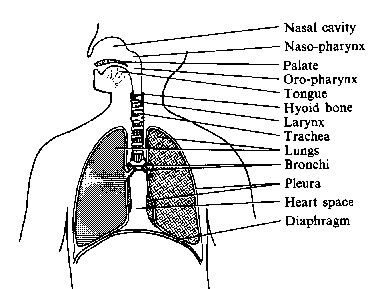Down Syndrome Abstract
of the Month:
Sept 2003

Airway anomalies in children with Down syndrome: endoscopic findings.
Bertrand P, Navarro H, Caussade S, Holmgren N, Sanchez I
Pediatr Pulmonol. 2003 Aug;36(2):137-41
Department of Pediatrics, Catholic University of Chile, Santiago, Chile
Abstract:
Down syndrome (DS) is the most common chromosomal anomaly in humans. Numerous congenital malformations associated with DS have been described. However, there are insufficient data available about airway anomalies. Our objective was to characterize the clinical presentation, frequency, and type of airway anomalies in a population of patients with DS. A retrospective evaluation of flexible bronchoscopies performed in 24 DS patients due to significant respiratory morbidity was compared to the findings in 324 non-DS patients during the same time period. The procedure was carried out under sedation, using an Olympus BF3C20 bronchoscope. The main indications for the procedure were atelectasis of the right upper lobe (12/24) and stridor (7/24). The most common associated conditions were congenital heart disease (12/24) and reactive airways disease (12/24). The most important endoscopic findings were: laryngomalacia (12/24), tracheomalacia (8/24), tracheal bronchus (5/24), and bronchomalacia (5/24). Only six patients had a normal examination. Multiple airway anomalies (>/=2) were a common finding in this series. We conclude that patients with DS and respiratory symptoms have a high incidence of airway anomalies compared to non-DS patients. The clinician should have a high index of suspicion for airway anomalies in DS patients with respiratory symptoms.My comments:
 |
First, some definitions: Laryngomalacia is the collapsing inward of tissues at the laryngeal area. Tracheomalacia is the collapsing inward of the tissues at the tracheal level. A tracheal bronchus is a bronchus that arises from the tracheal level (the bronchi normally branch off below the trachea). Bronchomalacia is collapsing of the tissues at the bronchial level. Stridor is a hoarse noisy respiration. (For a good sound recording of stridor, go to www.rale.ca/toc.htm.) |
On first glance, this article seems to indicate that most children with DS will have one of these airway anomalies. However, it's important to realize that all these children with DS that were evaluated were sent to this pulmonary clinic with a problem dealing with their respiratory system in the first place. The take home message here is that children with DS who have symptoms of respiratory difficulty (chronic cough, chronic stridor, or other noisy breathing) should be examined for airway anomalies.
Home Page | List of Past Abstracts | Contact Me